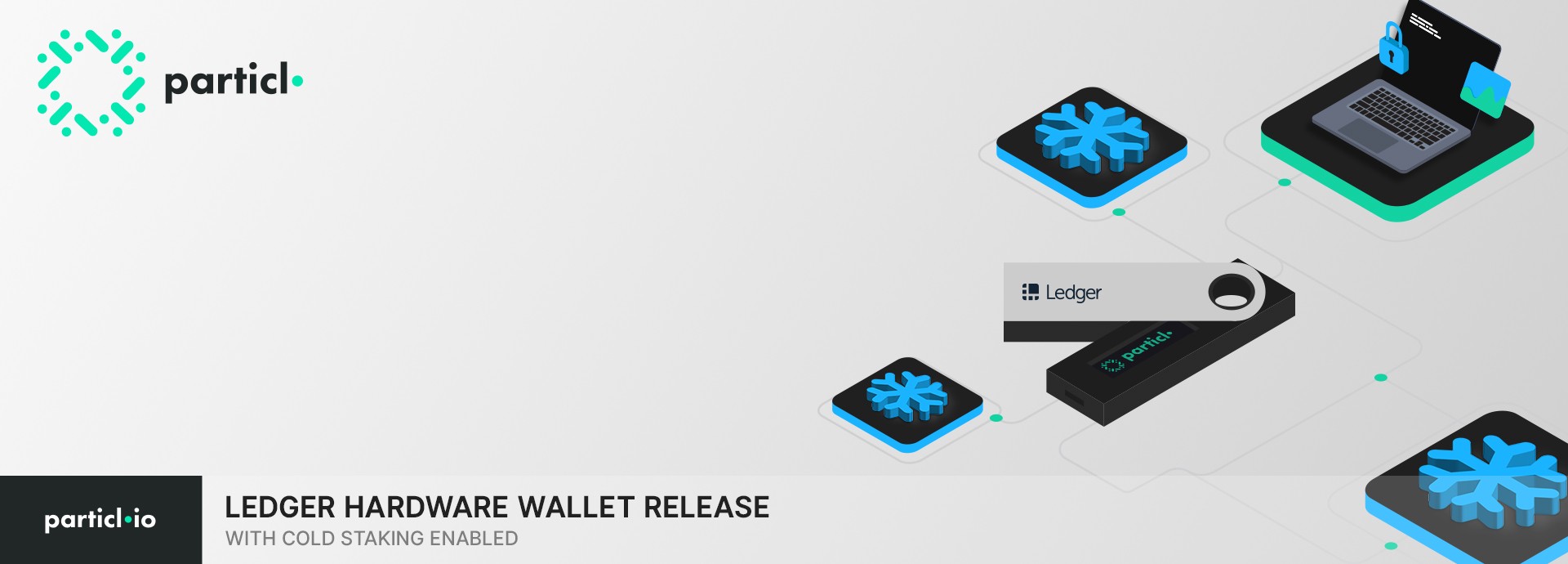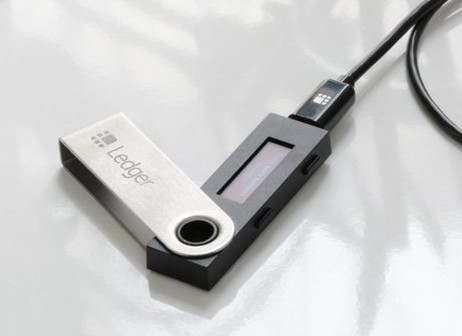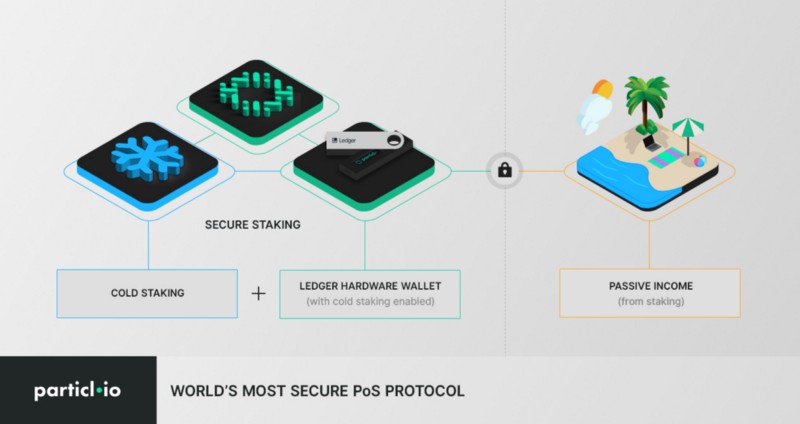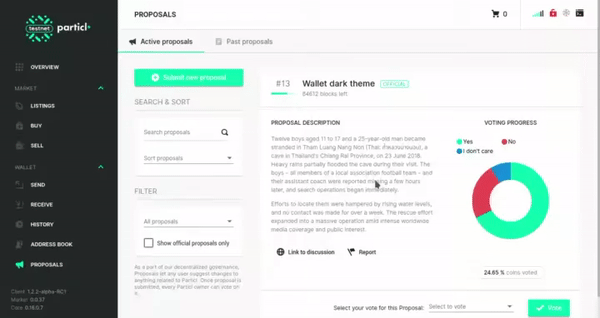
Update [10–08–2018]: The tutorial for cold staking from your Ledger Nano S is is now available on our Wiki! Simply head over to this link and follow the instructions: https://particl.wiki/ledger_staking. Note that, while the process can currently only be executed from the Particl-Qt client, an actual Particl Desktop integration will be coming at a later time.
Update [10–08–2018]: Your Particl balance will not show up on Ledger Live’s Portfolio interface. The Particl Ledger application currently only supports storing Particl on the Ledger Nano S and using the Particl features (staking, voting, transacting, etc). Ledger Live’s Portfolio may or may not come at a later time, this mostly depends on Ledger.
We are very excited to finally announce that as of today, Ledger has officially added support for Particl on their Ledger Live application and Nano S device. This means PART will now be available for cold storage on Nano S hardware wallets with cold staking capabilities enabled. This release marks the first time pure PoS coins stored on a hardware device can be safely staked without any intermediary nor internet connection required.
To learn how to use Particl on the Ledger Nano S, follow this simple tutorial on our Wiki page: https://particl.wiki/ledger
The Most Secure Way to Store PART
No matter how strong your passwords are or safely hidden your wallet files are, you are still putting yourself at great risk of getting hacked the moment you either enter a password or upload a wallet file on a computer or mobile device. Indeed, cryptocurrencies have become one of the prime targets for hackers and cyber thieves, and there are now several ways infected computers could result in the total loss of coins stored on unsafe wallets.

The Ledger Nano S is a hardware wallet, a special type of cryptocurrency wallet which stores the user’s private keys in a secure hardware device. They have major advantages over standard software wallets: private keys are stored in a protected area of a micro-controller, and cannot be transferred out of the device in plaintext. That means your funds are safe even when connected to an infected or malicious computer or a phishing/scam web page.
The World’s Most Secure PoS Protocol
A vulnerability often associated with PoS is the risk associated with the process of staking itself. In fact, Proof-of-Stake protocols usually require users to keep their wallets online and “unlocked for staking”. While wallets in that state are still locked and require a password to execute transactions, this very password is stored in the device’s memory so that it can remain “unlocked for staking”. As we’ve seen with the Spectre and Meltdown exploits earlier this year, storing any password in memory is a huge security risk which could easily result in the loss of coins if abused against PoS coin users.
This issue was fixed in 2017 when Particl released cold staking. In fact, cold staking lets users delegate their staking powers to cold staking nodes which contain no coin but can sign and stake blocks on behalf of any other address, even coins stored “offline” on hardware devices, paper wallets or cold wallets. These staking nodes do not require to be operated by any third-party other than the end user itself and can be set up quite easily by anyone. Practically, what this means is that users do not need to keep the funds they wish to stake exposed on hot wallets with the password stored in memory as that responsibility is assumed by the cold staking nodes (which do not contain any coin and can be left unencrypted).
The Ultimate Vulnerability
However, cold staking as it was currently standing was still leaving Particl stakers vulnerable to one final attack vector: transacting on infected computers. Indeed, even though the cold staking process is very secure, it alone does not fix the ultimate vulnerability that is an infected device. No matter how secure the staking process is, users still need to execute transactions to either spend or sell their staking rewards or rearrange their setup. That means private keys still need to ultimately be exposed in plain text, even if only for a brief moment. With cryptocurrencies increasingly becoming a prime target for hackers and cyber thieves, the possibility of a device getting infected without its owner even being aware of it becomes greater. That is even more true as more and more vulnerabilities and exploits surrounding the ME Intel chip keep making headlines.
Between all the new Spectre-class CPU flaws and the bugs the company and other researchers keep finding for its Management Engine (ME) firmware, Intel can’t seem to catch a break. Now the company has publicly disclosed two more ME bugs, one of which allows remote code execution on victims’ PCs.
The ME Intel chip is a proprietary engine that powers hardware features that operate at the baseboard level, below the operating system. By enabling interaction with low-level hardware, this chip gives administrators (or any user that can find practical exploits) the ability to perform tasks that previously required someone to be physically present at the desktop. The EFF itself describes the ME Intel chip as a “largely undocumented master controller for your CPU: it works with system firmware during boot and has direct access to system memory, the screen, keyboard, and network”.
Simply put, transacting any coin, PoS or PoW, is something that is exponentially becoming riskier as hackers get more experience in the crypto industry and improve their techniques.
Hardware Cold Staking to the Rescue

This is where the significance of this Ledger Nano S integration comes into play as it is coded in such a way that no private key needs to be exchanged between the Ledger Nano S hardware device and the client (Particl-Qt). This means that users will now be able to store funds stored on a hardware device and still delegate the hardware wallet’s staking powers to a cold staking node.
This release, as it currently stands, is the first ever successful mainnet release of a pure PoS hardware cold staking setup, the ultimate solution for users looking at getting the best level of security, flexibility, and accessibility without compromising decentralization. You know, when they say you “can’t have your cake and it eat too”, well it turns out with Particl you now can!
Secure Decentralized Voting Process

This Ledger Nano S integration currently only allow users to securely store and stake their funds offline on a hardware device, but it will also ultimately let users participate in both governance mechanisms available on Particl. Indeed, with a bit of additional work, users will be able to use their coins stored on their hardware device to participate in both governance system without ever requiring to expose their private key or password on the computer used to register their vote. This ensures that ALL Particl users, even those with the highest security standards, can partake in the decentralized governance of the project and its platform. No voice left unheard!
Exciting Times Lie Ahead
This release marks the start of an exciting period for the Particl project as we will start seeing more and more features hit both the testnet and mainnet networks. After a year or so of being in a deep development phase, the pieces are finally starting to come all together leading up to the release of the long-awaited Particl Marketplace on mainnet.
As a matter of fact, ever since the team meeting in Prague, the team has adopted new, better development and management processes and methodologies and has never been as effective as it currently is. That much can be noticed directly on our Github page where activity has been soaring and commits are pouring in. It can safely be stated that the development aspect of the project is currently at its best and has never been as steady and effective as it currently is.
Contest
To celebrate this new security feature, we would like to give away 5 Ledger Nano S hardware devices to our community! As such, we will be making various contests which are separated among our different platforms:
Twitter: To participate in this Twitter contest, follow the instructions written in our contest tweet and tag your favorite personality within the cryptocurrency community in the comment section of the tweet to give them a head’s up about this news! This contest will last until Friday 17:00 UTC . Three winners will win one Ledger Nano S each! The winners will be announced in our Community Update #4.
Discord: We will also take this opportunity to run our first Discord giveaway. As we mentioned in Community Update #3, we are gradually moving over to Discord and wish to leverage its flexibility more. We will be using GiveawayBot, a giveaway bot that will randomly pick winning participants. To participate in this Ledger Nano S giveaway, simply join the #Giveaway channel and react to the contest bot’s post. This giveaway will also run until Friday 17:00 UTC. Two random participants will be picked by the bot and win one Ledger Nano S each! The winners will be announced in our Community Update #4.
—
If you have any question regarding Particl on Ledger or on hardware cold staking, don’t hesitate to visit our tutorial and updated FAQ or join our Discord server!
The Particl team